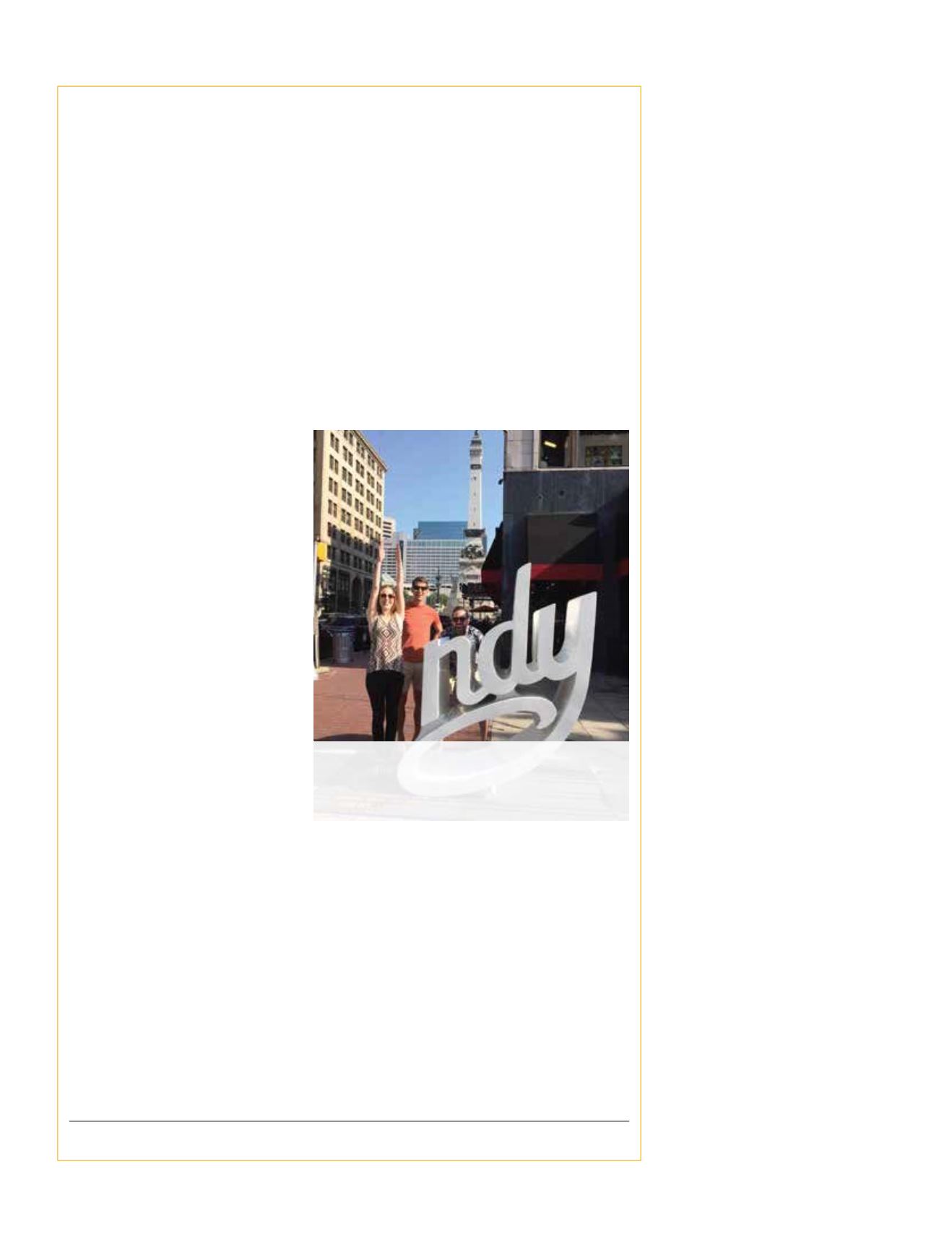

November/December 2016 – BizVoice/Indiana Chamber
97
More sharing of best practices is
what Bohlsen is hoping for.
“Most companies are doing
something in the CSR space and, once
they uncover that, I hope they will tell
their story,” she remarks.
Beyond the growth of social
entrepreneurship here and across the
country, Menyhart also foresees
“increased use of rigorous analytical
tools for companies that focus on the
double bottom line, such as B Corp
certification.” (In Indiana, there are
currently four that have earned that
distinction).
“Talking about combining social
purpose and for-profit business – using
terms like ‘mission-driven companies,’
‘double/triple bottom line,’ and
‘benefit corporations’ – will become
commonplace.” (Double bottom line
also includes a measure for positive
social impact; triple bottom line factors
in social, environmental and financial
performance.)
For her part, Lutz believes “the
conversation will continue to become
more pragmatic. It’s going to be less
about ‘doing the right thing’ or being
‘philanthropic’ and more about
considering how corporations align the
resources of skills, networks and people
to drive impact for the community at a
greater scale.”
Smith mixes a dose of reality with
his optimism. “I do see public interest in
CSR waxing and waning over time. For
example, during the recent presidential
debates, the influence of big business on
political platforms, North American trade,
job creation and taxes were center stage.
“(You have) further ethical
concerns in the business headlines – like
Mylan (with EpiPen costs) and Wells
Fargo (with customer fraud) – that
continue to underscore the importance
of ethical behavior in business,” he
declares.
“So the next few years may present
a great window of opportunity for
educators to make salient cases for CSR
to their students, and for businesses to
seize the opportunity to be leaders in
building a better world for tomorrow.”
McCarty can envision a time – not
too far away – when CSR will be simply
engrained into the fabric of business.
“We will no longer call CSR ‘CSR’
and simply know that this is a way of
life for each company that intends on
growing through the highs and lows of
economic trends.”
Thinking Outside the ‘Box’
Morphing business and community engagement has long since been occurring at an
Indianapolis-based creative agency.
For seven years straight, SmallBox developed a web site – in 24 hours – for free for a local
non-profit. Second Helpings, an organization dedicated to eliminating hunger, was the first
recipient in 2009.
The company’s Nice Projects awarded $1,000 grants to individuals and nonprofits in the
community for creative efforts that would make Indianapolis a nicer place to live.
CEO and co-founder Jeb Banner says his entire team “really run with these programs and
have pushed to think and reinvent how we engage the community.
“They are all empowered to get involved with local organizations and to donate their time
and talent. We often sponsor the nonprofits they are involved with. Quite a few SmallBox
employees have even founded nonprofits,” he shares.
SmallBox launched and continues to fund Musical Family Tree, a nonprofit that serves
Indiana musicians, specifically those outside the more classical arts like symphony or opera.
Banner explains: “It’s more for rock ‘n roll, hip-hop or singer-songwriter musicians who don’t
really have an advocate or an organization to support them.”
A vehicle that is helping SmallBox
take CSR to the next level is Factory
Week. The concept was born five years
ago over the need to fine-tune things
internally, make time for certain
projects and a desire to “push the whole
team to work together in new ways
and really adapt our way of working,”
Banner recalls.
All employees spend a week off-
site twice a year. One session had as
many as 30 projects; others two or
four, he reports.
“We’ve done the good chunk of
our own (current) web site during one
Factory Week. A lot of the strategic
direction we are headed in right now –
which is more toward consulting and
design thinking, workshops and
learning experiences – were visions
during a recent Factory Week,”
Banner offers.
“We’ve also built software
products which we have used with
clients. We’ve built video games just for fun. We’ve done community projects of all sorts. So
many things over the years.”
The Factory Week idea is one SmallBox encourages others to implement. Indeed, other
businesses have turned it into their own experience, sometimes doing it for a few days and under
a different name. “IU Health did it four years ago … they made a short video for us and sent it
afterwards. It’s neat to see (the idea) go out into the world and mutate.”
And during the latest Factory Week in August is where the shift to a greater CSR focus – at
the behest of both leadership and employees – took place.
“We did a whole day session on how we are going to engage the community going forward,”
Banner begins. “What we are looking to do is bring our facilitation services – particularly around
problem-solving – to different organizations in the community. We’ve begun experimenting
with that.
“We did a session recently where we facilitated what you would call a UX (user experience)
workshop specifically around the interface for Brackets for Good (an Indianapolis-based effort to
help raise the profile of nonprofit organizations to increase donations).
“That’s definitely where we will be going in the future and doing more of those types of things.”
RESOURCE:
Jeb Banner, SmallBox, at
www.smallbox.comSmallBox’s latest Factory Week included time out for a
scavenger hunt in downtown Indianapolis. The
company mixed in fun and community engagement,
including bringing donuts to a local non-profit.


















